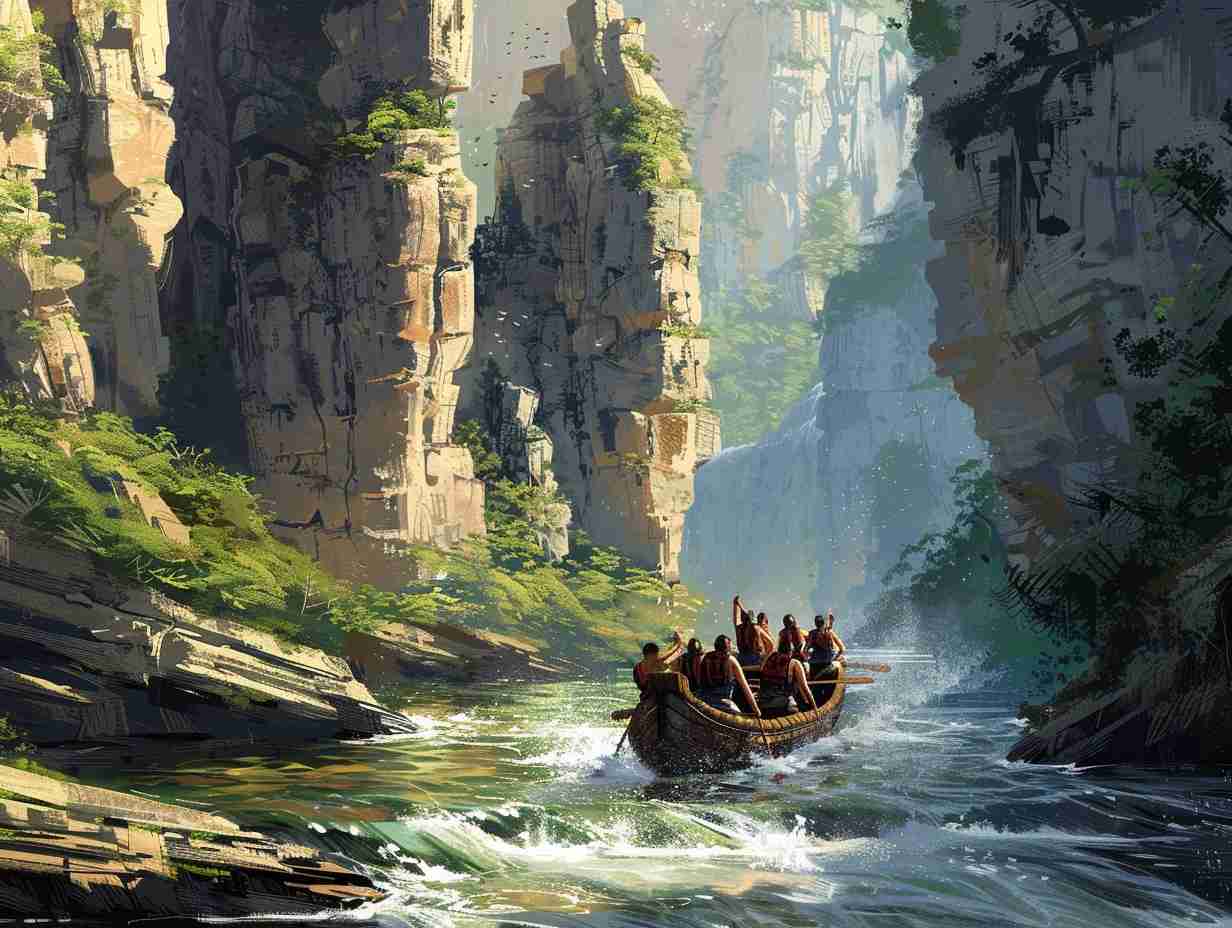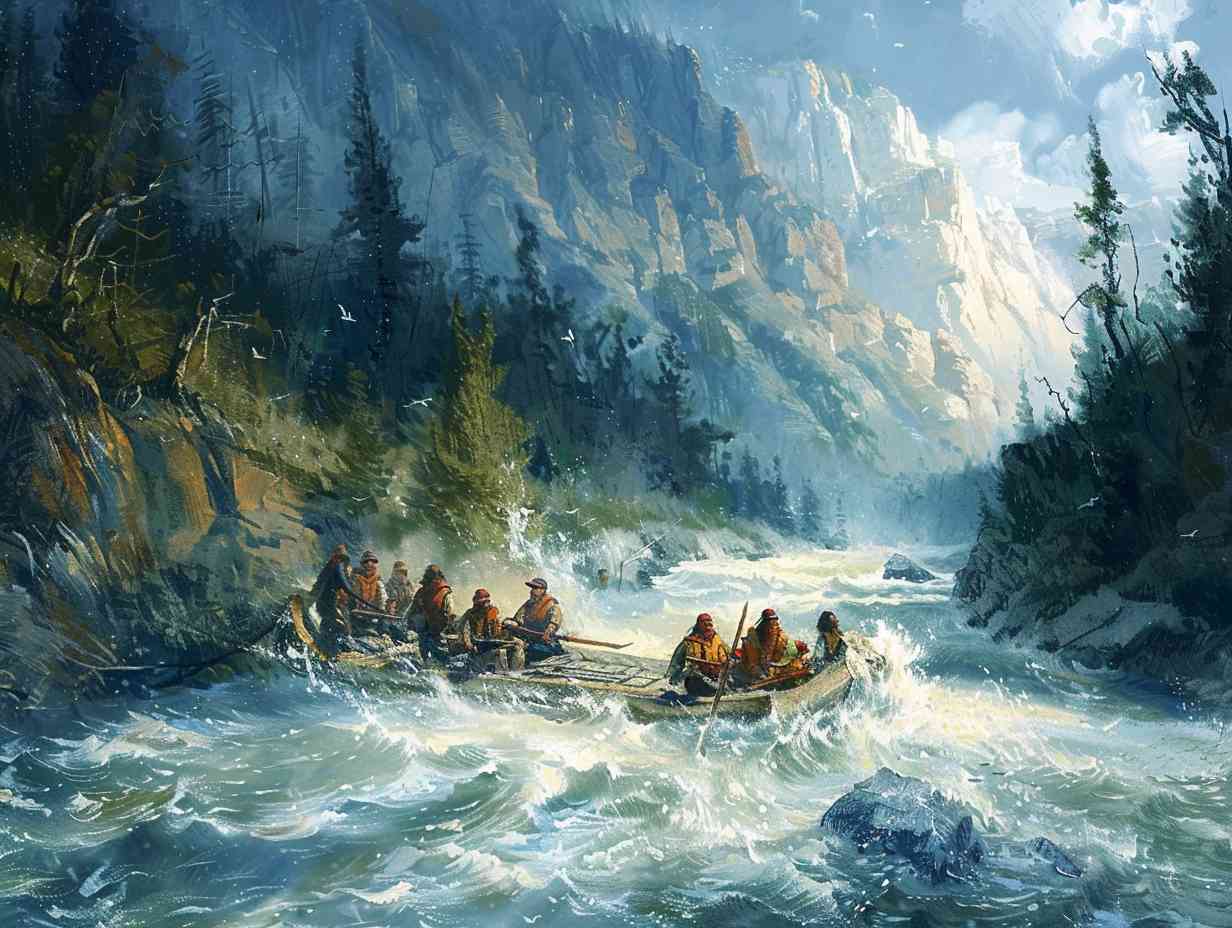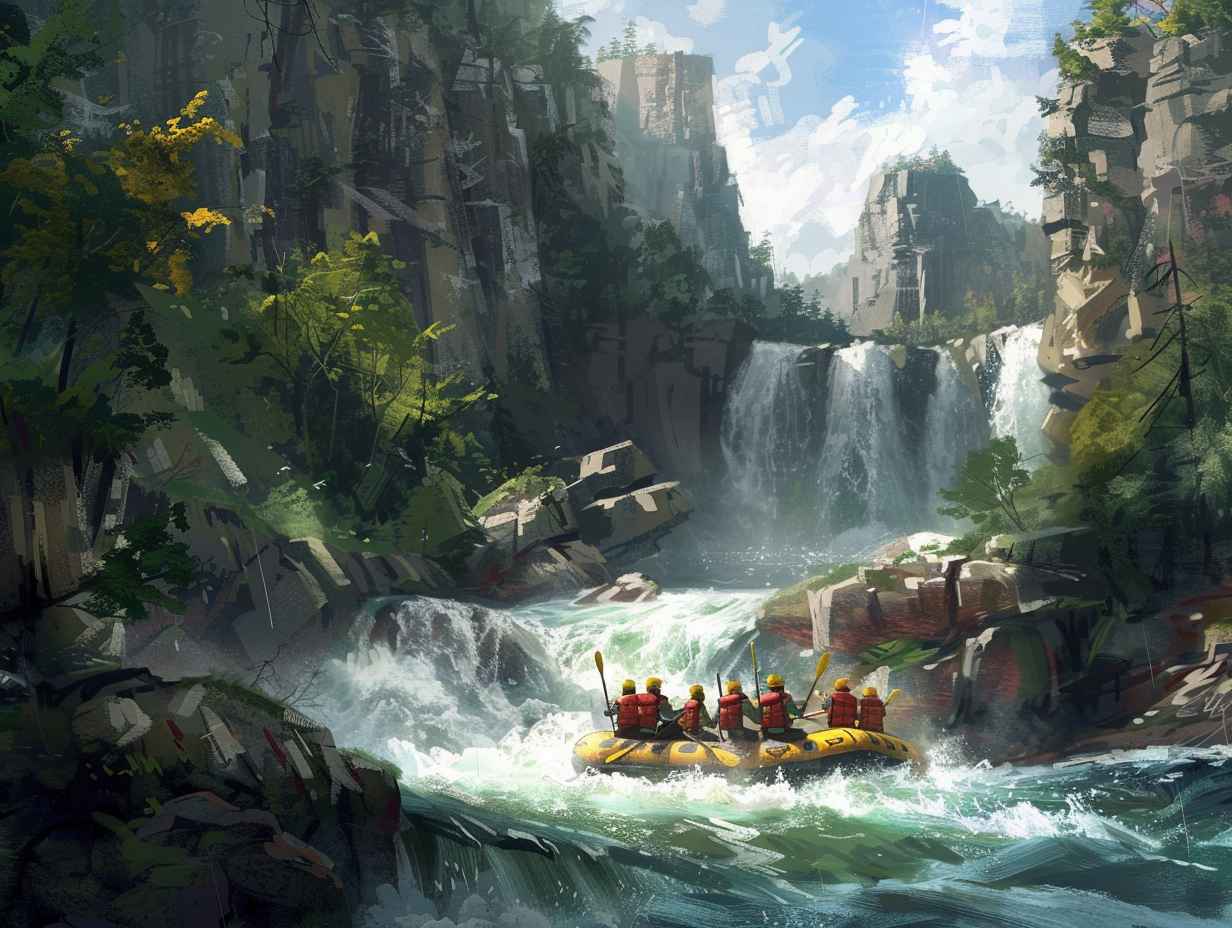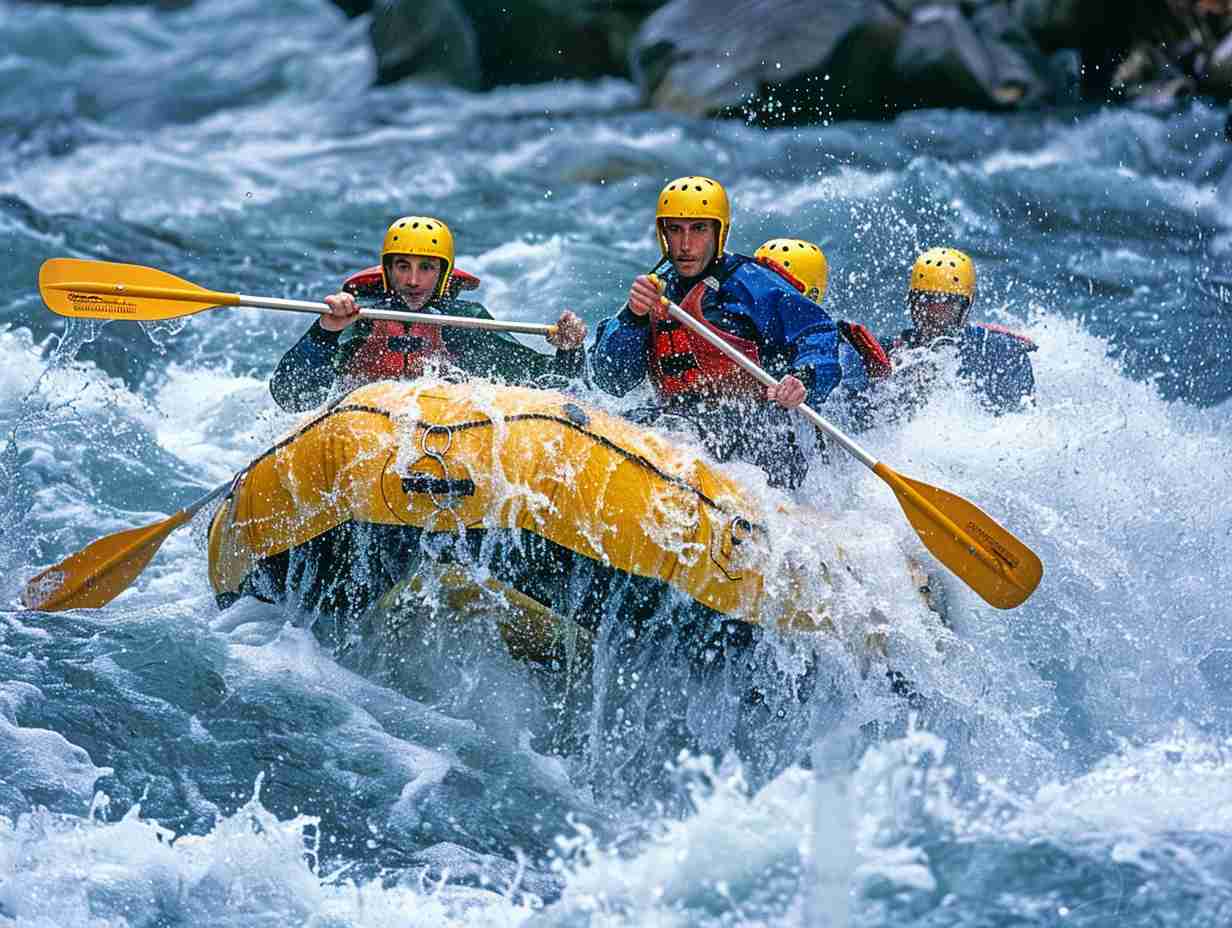
History of Rafting

Imagine floating down the Colorado River, surrounded by towering canyon walls and steering through exhilarating rapids. This thrilling experience is just a glimpse into the vast history of rafting.
From ancient civilizations using rafts as a means of transportation to the evolution of recreational rafting, the journey of this water sport is as enchanting as the rapids themselves.
But how did rafting transform from a practical mode of travel to an adrenaline-pumping adventure? Stay tuned to uncover the fascinating story behind the history of rafting.
Key Takeaways
- Rafting originated in ancient civilizations like Egypt, Mesopotamia, and China.
- Rafting served as a crucial mode of transportation for trade and connecting communities.
- Rafting evolved from practical use to recreational enjoyment over time.
- Modern rafting adventures offer safe and tailored trips for various preferences.
Ancient Origins of Rafting
Ancient civilizations across the globe utilized primitive forms of rafts for transportation and trade. These rafts were often made from logs or bundled reeds, providing a means to navigate rivers and lakes for various purposes.
Imagine yourself crafting a sturdy raft using natural materials found in your surroundings, just like our ancestors did thousands of years ago. Picture yourself starting on a journey, floating downstream as you observe the landscape passing by.
Ancient rafts were essential for connecting communities, facilitating the exchange of goods, and expanding cultural interactions. By embracing the simplicity and effectiveness of these early rafts, ancient civilizations laid the foundation for the development of more sophisticated watercraft in the future.
Rafting in Different Civilizations
Rafting techniques varied greatly among diverse civilizations throughout history, showcasing a range of innovative approaches to water navigation.
In ancient Egypt, the use of papyrus rafts was prevalent for transportation and trade along the Nile River. The Egyptians crafted sturdy rafts by binding together bundles of papyrus reeds, creating a buoyant vessel for their needs.
Moving to Mesopotamia, people utilized inflated animal skins to construct rafts, allowing them to navigate the Tigris and Euphrates rivers effectively.
Further east in China, bamboo rafts were commonly employed for fishing and transportation on the Yangtze River. Each civilization adapted to their unique environmental conditions, demonstrating the versatility and adaptability of rafting as a watercraft method.
Rafting as a Mode of Transportation

Traversing waterways through the use of rafts has long served as a vital and efficient mode of transportation for various civilizations across different regions. Rafting as a means of getting from one point to another has been ingrained in the daily lives of many communities. Whether for trade, exploration, or migration, rafts have facilitated movement over rivers, lakes, and even oceans.
Rafts were essential for transporting goods across rivers and lakes.
Rafting allowed for the exploration of new territories and water routes.
Civilizations used rafts as a mode of transportation for migrating to different regions, seeking new opportunities or fleeing from threats.
Evolution of Recreational Rafting
As individuals sought new ways to enjoy waterways, recreational rafting gradually emerged as a popular leisure activity. In the mid-1900s, people began embracing the thrill of exploring rivers for fun rather than solely for transportation or commerce. This shift led to the development of specialized recreational rafts designed for safety and enjoyment.
Adventurers started organizing group trips to tackle challenging rapids together, sparking the growth of recreational rafting as a social activity. Rafting companies began offering guided tours and expeditions, catering to both beginners and experienced rafters. The evolution of recreational rafting also saw the establishment of safety standards, training programs, and the popularization of rafting as an exciting outdoor pursuit for individuals and families alike.
Modern-Day Rafting Adventures

Initiate on exciting modern-day rafting adventures that promise exhilarating experiences on wild rivers worldwide. Whether you seek heart-pounding rapids or serene floats, modern rafting has something for everyone. Experienced guides lead you through stunning landscapes, ensuring both safety and fun.
- Cutting-edge Equipment: State-of-the-art gear enhances your adventure, providing comfort and security.
- Varied Destinations: From the rugged Grand Canyon to the lush jungles of Costa Rica, there’s a rafting trip for every preference.
- Tailored Trips: Customize your experience with options like family-friendly floats or adrenaline-pumping extreme rafting routes.
Embark on these contemporary journeys to create lasting memories and connect with nature in an exciting way.
Frequently Asked Questions
What Are the Most Popular Rivers for Rafting in the World?
You’ll find exhilarating rafting adventures on the Colorado River in the Grand Canyon, the Zambezi River in Africa, and the Futaleufú River in Chile. These rivers offer thrilling rapids and stunning scenery for your next rafting trip.
How Has Technology Impacted the Sport of Rafting Over the Years?
Technology has revolutionized rafting by introducing specialized gear like self-bailing rafts and advanced safety equipment. GPS navigation systems enhance river trips, while waterproof cameras capture thrilling moments. Innovation continues to enhance the sport’s safety and enjoyment.
Are There Any Famous Historical Figures Known for Their Involvement in Rafting?
Imagine the thrill of rafting down rivers alongside historical figures like John Wesley Powell or George Bass. Their pioneering spirit and love for adventure have inspired generations to embrace the excitement of rafting.
What Safety Measures Are Typically in Place for Commercial Rafting Trips?
When you go on commercial rafting trips, safety measures like life jackets, helmets, and experienced guides are usually in place. Before you hit the rapids, briefings on paddling techniques and what to do in emergencies are standard.
How Has Climate Change Affected the Availability of Rafting Opportunities in Certain Regions?
You’d think rafting opportunities would’ve expanded with climate change, but sadly, it’s the opposite. In certain regions, extreme weather patterns and water flow alterations have limited rafting options. Stay informed before planning your next adventure.
Conclusion
To sum up, rafting has a long and fascinating history that dates back to ancient civilizations. Did you know that over 3 million people participate in whitewater rafting each year in the United States alone?
From its origins as a mode of transportation to its evolution into a thrilling recreational activity, rafting continues to be a popular adventure for people of all ages.
So grab a paddle and experience the excitement of rafting for yourself!
More information about History of Rafting
Where Does the Word Rafting Come From
Journey through the exciting origins of the word 'rafting' to discover its hidden historical and cultural significance.
Why Do They Call It White Water Rafting
Nestled within the thrilling world of white water rafting is a surprising reason behind the water's white appearance - want to uncover the mystery?
Affiliate information declaration: We may earn revenue from the products referred on this page and participate in affiliate programs.




